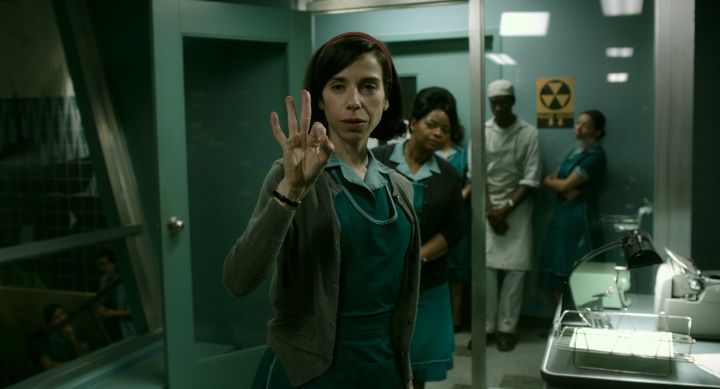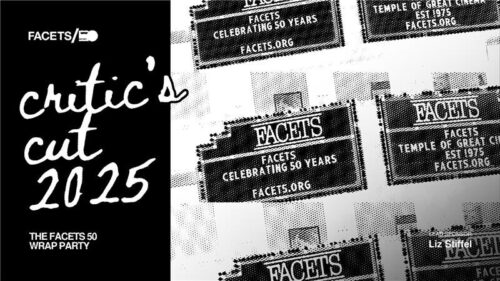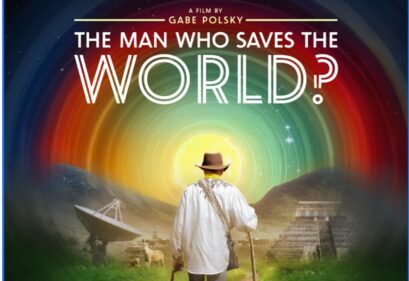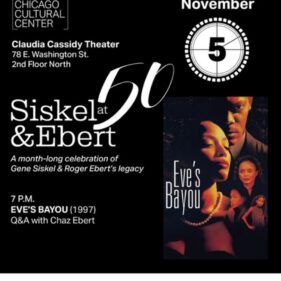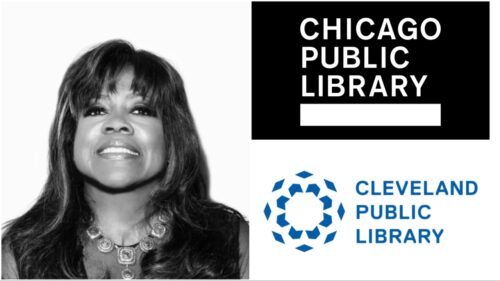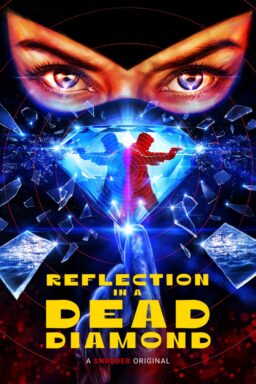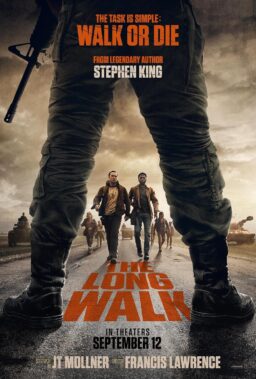Hollywood just doesn’t seem interested in telling unique disabled stories in general, and the only narrative they do regards men who become disabled. “Where the women at?,” to paraphrase “Blazing Saddles.” When I saw “The Shape of Water” last year I had to smile. The movie has its flaws from a disability standpoint, but seeing a mainstream Hollywood feature about a woman with a disability from birth, who is a sexual being, who is independent, and who leads her own story, felt revolutionary. Stories about women with disabilities in mainstream American cinema are rare, and there’s a long history involving Hollywood’s unwillingness and inability to focus on disabled women that’s hard to not boil down to aesthetics. The narratives make women stronger, but the continued absence of mainstream features about disabled women only enhances the belief that women with disabilities are unsexy and should stay off the screen.
Hollywood’s easiest route to take when spotlighting disabled women at all is to focus on presumed invisible disabilities such as blindness, deafness or muteness. The disability is just enough to inspire narrative stakes and introduce a good-looking male lead, but it’s considered physically damaging on the outside. It can be overcome, adapted and accepted, by both society and the male paramour. Oftentimes, it’s indicative of an angelic character. More cynically, an A-list actress can challenge herself with a disabled role, yet still remain sexually appealing to audiences. There’s a misguided belief, especially in films made before the passing of the Americans with Disabilities Act in 1990, that these women are missing out on life.
The ‘Pretty and Damaged’ stereotype draws comparisons to the Victorian notion of the “angel in the household,” wherein women are literally representative of the “love is blind” metaphor. These women, whose inner goodness negates their damaged exterior, are able to sniff out the inner benevolence of the men around them. Charlie Chaplin’s 1931 masterpiece “City Lights” introduces Virginia Cherrill as “A Blind Girl” who falls for Chaplin’s Little Tramp who she believes is a kind and wealthy benefactor. The story isn’t the blind girl’s; in fact, her disability is her sole defining characteristic. It is the Tramp’s as he struggles to raise money to restore her sight and ultimately be worthy of her love. Though her sight is restored she must returned to her disability as a parlor trick to lift the weights from her eyes and realize the Tramp is the kind man she’s been in love with. Where “City Lights” uses blindness to alleviate class differences, 1965’s “A Patch of Blue” uses it to as a metaphor for racial divide, love literally being blind to racism. Elizabeth Hartman’s Selina is a low-rent young girl who yearns for independence outside her abusive household. The film navigates her attempts to become self-sufficient, but the crux of the narrative involves her relationship with a man named Gordon, played by Sidney Poitier. Like “City Lights,” the woman at the center doesn’t know anything about Poitier’s societal standing, but knows he’s good at heart.

On the flipside is the 1967 Audrey Hepburn drama “Wait Until Dark,” part of a subsection of disabled women narratives: the “disabled damsel in distress.” The person with a disability fends off a man intent on harming her and is forced to rely on her adaptations to survive. Hepburn’s character Susy gets one over on the group of men terrorizing her by making them “like her.” She extinguishes all the lights, equalizing the men and showing they cannot live as successfully as she does. “Wait Until Dark” was seemingly the inspiration for the 2016 Mike Flanagan horror film, “Hush.” Flanagan’s heroine is deaf and must defeat a murderer who randomly chances upon her. “Hush,” in particular, demonstrates the falsity of The Man’s (John Gallagher, Jr.) belief that Kate Siegel’s Maddie is as good as dead because she’s disabled. He sees her as an easy target. Both of these movies require the woman to use their disability as a means of survival. The ableism of their villains is exposed, but the women are still forced to endure all manner of horrors because they realize their disability is an advantage.
Blindness is just one of the go-to invisible disabilities for women because they can “pass” for able-bodied. Female stars can play these characters with no prosthetics and little training. It also leads to additional tropes where the women are perceived as delicate and unaware they supposedly don’t interact with the world. These isolating features can also be utilized to spotlight male dominance, sexual harassment and assault, a crime in which women with disabilities are seven times as likely to endure than able-bodied women. Jane Wyman’s Belinda in 1948’s “Johnny Belinda”—a role for which she won an Oscar—is a deaf-mute. Called “dummy” by her family, she’s later raped and shunned by the town, eventually having to kill a man to defend her baby. She seemingly is able to put the pieces of her life back together, but she faces social scrutiny for supposed promiscuity. It isn’t until the able-bodied wife of her attacker confesses that Belinda’s story is given legitimacy, an early depiction of the belief that disabled people can’t speak for themselves or are unclear about truth. “The Shape of Water” is the closest to come to presenting the frightening horrors of sexual harassment disabled women face. Sally Hawkins’ Elisa becomes the subject of fascination from Michael Shannon’s Strickland who tells her he “doesn’t mind” that she’s disabled, believing she should be grateful he’s put his attentions on her.

Strickland’s character reveals much of Hollywood’s thinking regarding women with disabilities. It’s assumed that too many people will “mind” if these characters are disabled. There’s presumably no sexual attraction to women with physical disabilities and it’s better to keep them in roles wherein there’s no physical evidence of their supposed damage. Sam Claflin’s Will Traynor in the 2016’s “Me Before You” can remain good looking with a six-pack. His looks are unaffected by his disability. There’s less acceptance for women on-screen with physical disabilities. Physical evidence connotes damage, a manifestation of how the woman is “less than.” This bitterness comes through in the studio feature “The Sign of the Ram” (1948). Susan Peters, who actually was physically disabled, plays a shrewish, domineering invalid who openly exploits her disability. The movie never makes it known whether she’s driven to cynicism by her situation or was always that way, but the two work in tandem. On the opposite side of the spectrum is 1957’s “An Affair to Remember.” Deborah Kerr’s Terry is hit by a bus and would rather live alone, or die, than compel her lover Nicky (Cary Grant) to marry her. Her reasoning: if she can’t walk she can’t bear him children and thus be a real woman. In both situations, physical disabilities are seen as death sentences that leave women emotionally and physically barren.
When women with physical disabilities are sexual, it is most often in horror films. Tod Browning’s 1932 feature “Freaks” gave audiences a glimpse at Siamese twins Daisy and Violet Hilton. The sisters are svelte and alluring, and one is in a seemingly sexual relationship with a man. It isn’t a source of punishment or strife, but a fact of their life. Don Mancini’s two recent Chucky films, 2013’s “Curse of Chucky” and 2017’s “Cult of Chucky” follow self-sufficient and sexual heroine Nica (Fiona Dourif) who doesn’t conform to the “disabled damsel” trope. In a 2017 interview I conducted with Mancini, he cited the character of Mark from “Friday the 13th, Part 2” (1981) as his inspiration for Nica. He wondered why a female character in a wheelchair couldn’t be like everyone else, and that includes having sex. The horror genre embraces the aberrant, and where mainstream Hollywood sees a sexually powerful disabled woman as aberrant, horror films don’t. That’s not to say they are perfect. Women with physical disabilities on-screen can also be showcased as grotesque monsters. Zelda in the 1989 horror film “Pet Semetary” is a figure so horrifying and deformed she’s described as a literal “monster.” She ceases to be a woman, a fact enhanced by the character being performed by a man. Even the innocent 1989 animated Disney film “The Little Mermaid” sees Ariel give up her voice for a set of legs and eventual marriage to a normal man, an instant cure for what is perceived by her to be a disability.

The statistics about how few movies are about people with disabilities are well known—they currently stand at 2.4%—yet there’s been no study done on how many of these movies focus on exclusively men with disabilities. Why, when Hollywood bothers to examine disability, does it only filter through a male perspective? The answer sounds no different than asking why women aren’t directing more, or why women don’t hold more positions of power in film studios. Men dominate all manner of production—92% of directors are men—and though there aren’t numbers to back it up, it’s assumed 100% of them are able-bodied. The same goes for screenwriters. If writing is about what you know, it’s unsurprising that most scripts about disabled experiences are about white men, because that’s the majority of who write them. This also explains why there’s an absolute dearth of disabled women of color in the U.S. canon of films about women with disabilities. The same goes for LGBT and trans women with disabilities.
Things are slowly changing. Deaf, mute, and blind women in cinema are slowly changing into sexual beings. Marlee Matlin—still the only woman with a disability to win an Oscar—as Sarah in the 1986 feature “Children of a Lesser God,” is sexual and engages in a relationship, while “Shape of Water”’s Elisa is progressive enough to be responsible for her own sexual health. Women with physical disabilities are also on an uptick, but mainly in the international and independent circuits. France had the feature “Rust and Bone” in 2012; the 2014 drama “Margarita With a Straw,” from India, follows a woman with cerebral palsy; independent features like 1987’s “Gaby: A True Story.” All of these features exist and it’s up to the United States, often the source of what fuels the cultural dialectic of films, to catch up.
Women with disabilities don’t have to be perceived as attractive just to exist. If male characters with disabilities can be shown living, adapting and persevering, we need to see women doing so as well.
